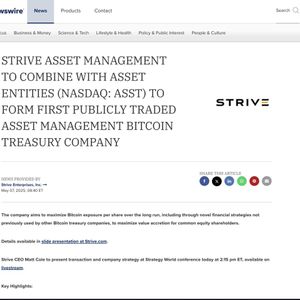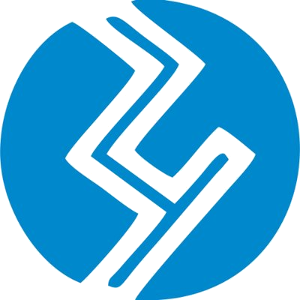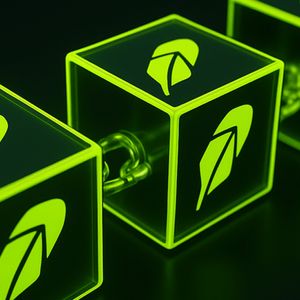The decentralized finance (DeFi) sector keeps developing quickly. New protocols and platforms push boundaries and attract new capital. Ostium, a system decentralized exchange in the perpetual trading space, was one of April’s success stories. Built on the Arbitrum platform, Ostium has emerged as a serious player in DeFi by offering, in a completely transparent and non-custodial environment, trading options not just for cryptocurrencies but for something really wild and crazy: commodities, indices, and forex. Who trades those things in a DApp? Ostium does. Ostium surged in a month to become a DeFi standout. Ostium’s TVL surged by 1K% in April @OstiumLabs is a perpetual DEX on @arbitrum offering transparent, non-custodial trading of commodities, indices, forex, and crypto. Its TVL jumped from $5M in March to $63M in April. @canopyxyz , @MovePosition and @meridian_money from the… pic.twitter.com/3uAy8uo9zT — CryptoRank.io (@CryptoRank_io) May 1, 2025 Last month, the platform’s total value locked (TVL) surged by over 1,000%, catapulting from just $5 million in March to a remarkable $63 million by the end of April. This explosive growth has positioned Ostium as one of the standout performers in the DeFi ecosystem and signals a broader trend toward more diversified on-chain trading instruments. Institutional-Style Trading Comes to DeFi Ostium has a one-of-a-kind model that extends the reach of on-chain trading far beyond the realm of cryptocurrencies. It offers perpetual contracts (ones that don’t have an expiration date) on a dazzling array of financial tools; these include not just the ubiquitous bitcoin and Ethereum, but also commodities like gold and oil, forex (i.e., foreign exchange) currency pairs, and even stock indices. Ostium is thus trying to replicate the extraordinary breadth of the traditional finance world—that is, buying and selling all kinds of different stuff—within a decentralized framework. So far, it is successful and that tells us there is a real demand for this kind of offering. Both institutional and retail traders are now more than ever seeking an alternative to centralized finance (CeFi). They want platforms that offer the transparency and self-custody benefits of DeFi (decentralized finance) but still retain the sophistication of traditional financial instruments and markets. Ostium’s platform is said to be TVL (Total Value Locked) sensitive to the algorithms and a high-speed graph the team has put together. This may be a direct result of early trust, early integrations, and potentially some early institution-level engagement. Moreover, Ostium has a scalability edge since it is built on Arbitrum—a high-throughput, low-fee Layer 2 network of Ethereum. For traders, gas costs are a big consideration. When they are onerous, traders are dissuaded from frequent and high-volume trading. When they are not—like on Ostium—traders are more likely to engage in frequent and high-volume trading. Movement Labs Ecosystem Projects Also Surge Not only Ostium made waves in April with its project. Several protocols linked to Movement Labs ecosystem reported awesome growth too, particularly in TVL and user adoption. Among the standout projects were Canopy, Move Position, and Meridian Money. It’s hard to not love what each of these holds in store for us. These platforms are gaining recognition for using the Move programming language, which was initially developed by Facebook’s Diem project. Move has some exciting features that make it suitable for writing secure and modular smart contracts. Movement Labs is at the forefront of promoting Move as a safe and sound foundation for the next generation of smart contracts. The growth of the projects associated with Movement Labs is helping to lend some validation to that vision. These platforms are rising very fast, and that is showing how developer ecosystems—especially those offering different programming models or giving clear scaling benefits—can drive innovation and user adoption. The build and user communities are moving to these ecosystems as alternatives to the shortcomings of the Ethereum mainnet, and these ecosystems are proving that they can attract real liquidity. RWA Projects Gain Ground Amid Stablecoin Shifts April witnessed restored focus on the tokenization of real-world assets (RWAs), a movement that keeps gathering pace in decentralized finance (DeFi). During the month, two leading RWA platforms, TangibleDAO and Anemoy Capital, built up notable momentum, indicating that investors are hunting for yield-bearing assets that are unlikely to be affected by crypto market swings. People are paying new attention to RWA because stablecoins are moving off centralized exchanges, tipping us off to a possible new risk profile among traders. When we see billions of stablecoins coming off exchanges in April, for instance, it could point to users seeking newly accessible, lower-risk opportunities in DeFi. And RWAs are just that—low-risk, high-yield opportunities—that users seem to be accessing in large numbers. Specific protocols offer asset tokenization services for traditionally illiquid assets such as real estate, bonds, or invoice receivables. The protocols enable these assets to be accessed directly and on-chain by investors. The sector of asset tokenization has witnessed a growing interest in recent times, which could pave the way for a longer-term shift and DeFi pivot toward on-chain applications that are directly tied to tangible and petit economic activity. A Broader Signal of Maturing DeFi When combined, the TVL surge at Ostium, the swift rise of Movement Labs projects, and the real-world asset traction all suggest that DeFi has crossed another milestone. Users and capital are flowing not just into DeFi’s high-value experiments, but into DeFi platforms offering clean, clear, useful plumbing—whether that plumbing leads to custodial access to global markets, access to blockchain-based infrastructure, or even access to some really fun toys. As creativity keeps transforming the DeFi sector, the happenings of April show that the growth isn’t confined to the market’s speculative niches. Instead, money is moving into protocols that are constructing genuine, practical financial instruments. Ostium’s ascent might herald the next wave of DeFi, which mingles familiar, institutional-grade services with decentralized, app-like access. And the rest of the DeFi ecosystem is on board—so much so that it appears to be what the kids today call a “vibe.” Disclosure: This is not trading or investment advice. Always do your research before buying any cryptocurrency or investing in any services. Follow us on Twitter @nulltxnews to stay updated with the latest Crypto, NFT, AI, Cybersecurity, Distributed Computing, and Metaverse news !
















